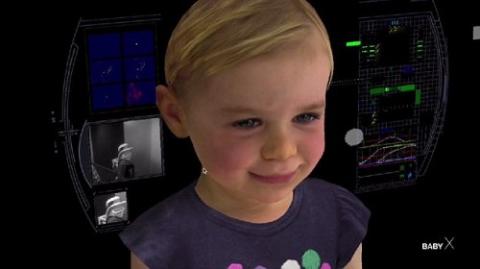BabyX, the virtual baby
The baby is based on Auckland Univeristy scientist Dr Mark Sagar’s own daughter, Francesca. The goal is to eventually create a machine that can think and learn exactly like a real human baby, and ultimately grow it into an artificially intelligent adult. ‘We are developing multidisciplinary technologies to create interactive autonomously animated systems which will define the next generation of human computer interaction and facial animation,’ the researchers write on their website.
They continue that BabyX ‘is an experimental vehicle incorporating computational models of basic neural systems involved in interactive behaviour and learning.’
The uses of BabyX are apparently not limited to artificially intelligent people, however. For example interactive lighting and music in a shop could change to match the emotional responses of customers.
Ultimately, though, they hope BabyX might be a precursor to creating fully artificially intelligent brains that can learn and interact.
Jonatan O'Callaghan

